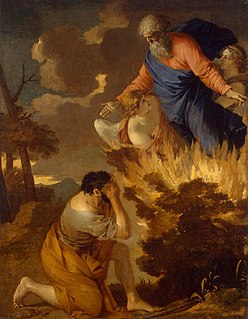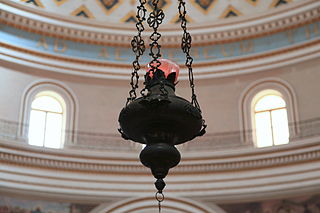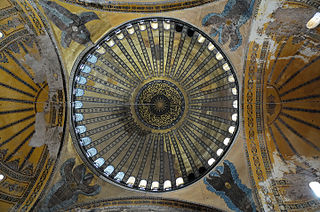 W
WWorship or deification of fire is known from various religions. Fire has been an important part of human culture since the Lower Paleolithic. The earliest known traces of controlled fire were found at the Daughters of Jacob Bridge, Israel, and dated to 790,000 years ago. Religious or animist notions connected to fire are assumed to reach back to such early pre-Homo sapiens times.
 W
WAtar, Atash, or Azar is the Zoroastrian concept of holy fire, sometimes described in abstract terms as "burning and unburning fire" or "visible and invisible fire". It is considered to be the visible presence of Ahura Mazda and his Asha through the eponymous Yazata. The rituals for purifying a fire are performed 1,128 times a year.
 W
WThe badnjak, also called veseljak, is a tree branch or entire tree that is central to Serbian Christmas celebrations. It is placed on a fire on Christmas Eve and its branches are later brought home by worshipers. The tree from which the badnjak is cut, preferably a young, straight and undamaged Austrian oak, is ceremonially felled early on the morning of Christmas Eve. The felling, preparation, bringing in, and laying on the fire, are surrounded by elaborate rituals, with many regional variations. The burning of the log is accompanied by prayers that the coming year brings food, happiness, love, luck, and riches. The log burns on throughout Christmas Day, when the first visitor strikes it with a poker or a branch to make sparks fly, while wishing that the family's happiness and prosperity be as abundant as the sparks. As most Serbs today live in towns and cities, the badnjak is often symbolically represented by a cluster of oak twigs with brown leaves attached, with which the home is decorated on Christmas Eve.
 W
WThe burning bush is an object described by the Book of Exodus as being located on Mount Horeb. According to the narrative, the bush was on fire, but was not consumed by the flames, hence the name. In the biblical narrative, the burning bush is the location at which Moses was appointed by God to lead the Israelites out of Egypt and into Canaan.
 W
WFire and brimstone is an idiomatic expression referring to God's wrath found in both the Hebrew Bible and the Christian New Testament. In the Bible, it often appears in reference to the fate of the unfaithful. Brimstone, an archaic term synonymous with sulfur, evokes the acrid odor of sulfur dioxide given off by lightning strikes. Lightning was understood as divine punishment by many ancient religions; the association of sulfur with divine retribution is common in the Bible.
 W
WA flaming chalice is the most widely used symbol of Unitarianism and Unitarian Universalism (UUism) and the official logo of the Unitarian Universalist Association (UUA) and other Unitarian and UU churches and societies.
 W
WA flaming sword is a sword glowing with flame by some supernatural power. Flaming swords have existed in legend and myth for thousands of years.
 W
WA holocaust is a religious animal sacrifice that is completely consumed by fire. The word derives from the Ancient Greek holokaustos, which is used solely for one of the major forms of sacrifice. This form of sacrifice is also known as a burnt offering.
 W
WThe Holy Fire is described by Orthodox Christians as a miracle that occurs every year at the Church of the Holy Sepulchre in Jerusalem on Great Saturday, or Holy Saturday, the day preceding Orthodox Easter. However, many dispute the alleged miraculous descent of the Fire.
 W
WJoss paper, also known as ghost or spirit money, are papercrafts or sheets of paper made into burnt offerings common in Chinese ancestral worship. Worship of gods also uses a similar paper. Joss paper, as well as other papier-mâché items, are also burned or buried in various Asian funerals, "to ensure that the spirit of the deceased has lots of good things in the afterlife." In Taiwan alone, the annual revenue of temples received from burning joss paper was US$400 million as of 2014.
 W
WLag BaOmer, also Lag B'Omer, is a Jewish religious holiday celebrated on the 33rd day of the Counting of the Omer, which occurs on the 18th day of the Hebrew month of Iyar.
 W
WMatthew 3:10 is the tenth verse of the third chapter of the Gospel of Matthew in the New Testament. The verse occurs in where John the Baptist is berating the Pharisees and Sadducees. He has previously called them a brood of vipers and warned them of the wrath to come and has urged them to repent. This verse returns to the fruit metaphor of Matthew 3:8 adding a promise of eventual punishment.
 W
WMatthew 3:11 is the eleventh verse of the third chapter of the Gospel of Matthew in the New Testament. The verse occurs in the section relating the preachings of John the Baptist. In this verse he predicts that he will be followed by someone much greater than himself. The main theme of this verse is that John will soon be supplanted by a much greater figure and that John's water baptism is just a preparation for the much greater baptism by fire and spirit that will occur under the second coming of the Christian messiah Jesus, an original Christian concept that, according to Jewish scholars, lacks any fundament in the Hebrew scripture.
 W
WMatthew 7:19 and Matthew 7:20 are the nineteenth and twentieth verses of the seventh chapter of the Gospel of Matthew in the New Testament and are part of the Sermon on the Mount. The verses continue the section warning against false prophets.
 W
WThe Hanukkah menorah, also chanukiah or hanukkiah, is a nine-branched candelabrum lit during the eight-day holiday of Hanukkah. Eight of the nine branches hold lights that symbolize the eight nights of the holiday; on each night, one more light is lit than the previous night, until on the final night all eight branches are ignited. The ninth branch holds a candle, called the shamash, used to light the other eight.
 W
WThe menorah is described in the Bible as the seven-lamp ancient Hebrew lampstand made of pure gold and used in the tabernacle set up by Moses in the wilderness and later in the Temple in Jerusalem. Fresh olive oil was burned daily to light its lamps. The menorah was a symbol of both Judaism and Christianity since antiquity; in modern times it is considered solely a symbol of Judaism and is the emblem on the coat of arms of the modern state of Israel.
 W
WThe pillar of fire and pillar of cloud were manifestations of the presence of Yahweh in the Book of Exodus in the Hebrew Bible and the Christian Bible's Old Testament. The combination meant that the Israelites "could travel by day or night". Throughout the Israelite's time in the desert, traveling from Ancient Egypt to Canaan, Yahweh continually used this pillar of fire and cloud to lead his people and to remind them of his presence. When the pillar of God moved forward, the people of Israel would pack up their camp and follow behind it. Similarly, when the pillar stopped, the Israelites would set up camp underneath it. The Levites would set up the Tabernacle of the Lord directly underneath the cloud of the Lord. In this way, God's presence was visibly in the center of the camp at all times.
 W
WThe sacred fire of Vesta was a sacred eternal flame in ancient Rome. The Vestal Virgins, originally numbering two, later four and eventually six, were selected by lot and served for thirty years, tending the holy fire and performing other rituals connected to domestic life—among them were the ritual sweeping of the temple on June 15 and the preparation of food for certain festivals. By analogy, they also tended the life and soul of the city and of the body politic through the sacred fire of Vesta. The eternal burning of the sacred fire was a sign that determined eternal Rome.
 W
WA sanctuary lamp, chancel lamp, altar lamp, everlasting light, or eternal flame is a light that shines before the altar of sanctuaries in many Jewish and Christian places of worship. Prescribed in Exodus 27:20-21 of the Torah, this icon has taken on different meanings in each of the religions that have adopted it. The passage, which refers to prescriptions for the tabernacle, states:And thou shalt command the children of Israel, that they bring thee pure oil olive beaten for the light, to cause the lamp to burn always. In the tabernacle of the congregation without the veil, which is before the testimony, Aaron and his sons shall order it from evening to morning before the LORD: it shall be a statute for ever unto their generations on the behalf of the children of Israel. (KJV)
 W
WSati or suttee was a historical Hindu practice, in which a widow sacrifices herself by sitting atop her deceased husband's funeral pyre.
 W
WA seraph (, "the burning one";, in the King James Version also seraphims ; Hebrew: שָׂרָף, plural שְׂרָפִים ; Latin: seraphim, plural seraphin ; Greek: σεραφείμ ; Arabic: مشرفين is a type of celestial or heavenly being originating in Ancient Judaism. The term plays a role in subsequent Judaism, Christianity, and Islam. The singular "seraph" is a back-formation from the Hebrew plural-form 'seraphim', whereas in Hebrew the singular is 'saraph'.
 W
WA fire temple, Agiary, Atashkadeh, Atashgah (آتشگاه) or Dar-e Mehr is the place of worship for the followers of Zoroastrianism, the ancient religion of Iran (Persia). In the Zoroastrian religion, fire, together with clean water, are agents of ritual purity. Clean, white "ash for the purification ceremonies [is] regarded as the basis of ritual life", which "are essentially the rites proper to the tending of a domestic fire, for the temple [fire] is that of the hearth fire raised to a new solemnity". For, one "who sacrifices unto fire with fuel in his hand ..., is given happiness".